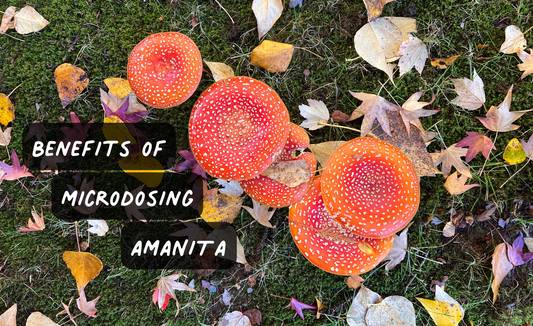Journal Contents:
- Where are Amanitas found?
- What environment do they live in?
- When will you find Amanitas growing?
- Where did Amanita muscaria first originate?
Where are Amanitas found?
Amanita muscaria mushrooms are found on every continent on Earth (except Antarctica) in both coniferous and deciduous forests. However, they are most likely to be found in temperate and boreal forests in the Northern Hemisphere.
The best way to visualize where in the world Fly Agarics are found is to pull up the inaturalist app (a popular online plant ID software) and see where people have been identifying the ruby red mushroom. However, it's good to note that not every country uses the inaturalist app, so the app is better to use as a general representation.
As you can see from the screenshot taken from inaturalist below, Amanita muscaria is found all around the world. You can also see some hotspots. One in the Pacific Northwest in the USA, where Luminita is foraged, and another in the northern parts of Europe, where there is a long history of use. New Zealand also has quite a few
 credit: inaturalist
credit: inaturalist
Let's take a closer look at North America.
 Photo Credit: u/mox911 on Reddit
Photo Credit: u/mox911 on Reddit
The above map was created by a reddit user after combining data of sightings from inaturalist, Mushroom observer, and local mycologists. It paints a more precise picture of where Amanita can be found in North America.
As you can see, they are found almost everywhere except for a small slice down the middle of the map. In fact, Amanita muscaria has been growing in North America for so long it has split into 4 subspecies, each slightly distinct from the others.
What environment do they live in?
Amanita muscaria is an obligate mycorrhizal species meaning they must have a host tree connected to them in order to survive. The trees create carbohydrates that they share with the mushrooms, and amanita gives the host trees water and nutrients that they can’t obtain on their own - it’s a symbiotic relationship. Thus you always find Amanitas near a host tree.
In general, they form mycorrhizal relationships with pine and birch trees but have been found under hundreds of types of trees around the world, making them a very cosmopolitan species.
When can you find Amanitas growing?
Amanita muscaria can technically be found year round, but most often will be found after a heavy rain in late Summer or Fall. In areas North of the equator, most mushrooms pop up in the months of September and October.
During the Spring and Summer, when they aren't fruiting, the mycelium grows large and strong underground. It's not until the ground gets fully soaked after a few spells of rain is Amanita able to push up its mushrooms.
Take a look a the graph below taken from naturalist. They have aggregated the data on the number of sightings added to their platform by time of year, and you can see the same trend that follows our logic. (Note: most users of inaturalist live north of the equator.)
 credit: Inaturalist
credit: Inaturalist
Where did Amanita muscaria first originate?
Evolutionary biologists have traced the first Amanita muscaria genetics to the Siberia-Beringian region about 3 million years ago. Since then it has spread both east and west. East across the Bering Sea bridge into North and South America, as well as west into Europe.

credit: hakaimagazine
There is debate among scientists if Amanita mushrooms were carried by humans around the world or if they spread via spores. What is known is there are distinct lineages on each continent, meaning the Amanita muscaria mushrooms from Russia are slightly different from the ones in North America, however they all contain ibotenic acid and muscimol, and all have the same potential for healing.
As a reminder, though Amanita muscaria can be identified by its ruby red cap, the genus Amanita contains some very toxic and even lethal species that you do not want to mess with (look up Amanita phalloides), especially if you are unsure of what you are doing.
Most mycologist follow this rule: If you aren't 100% certain of its identification, don't eat it.













